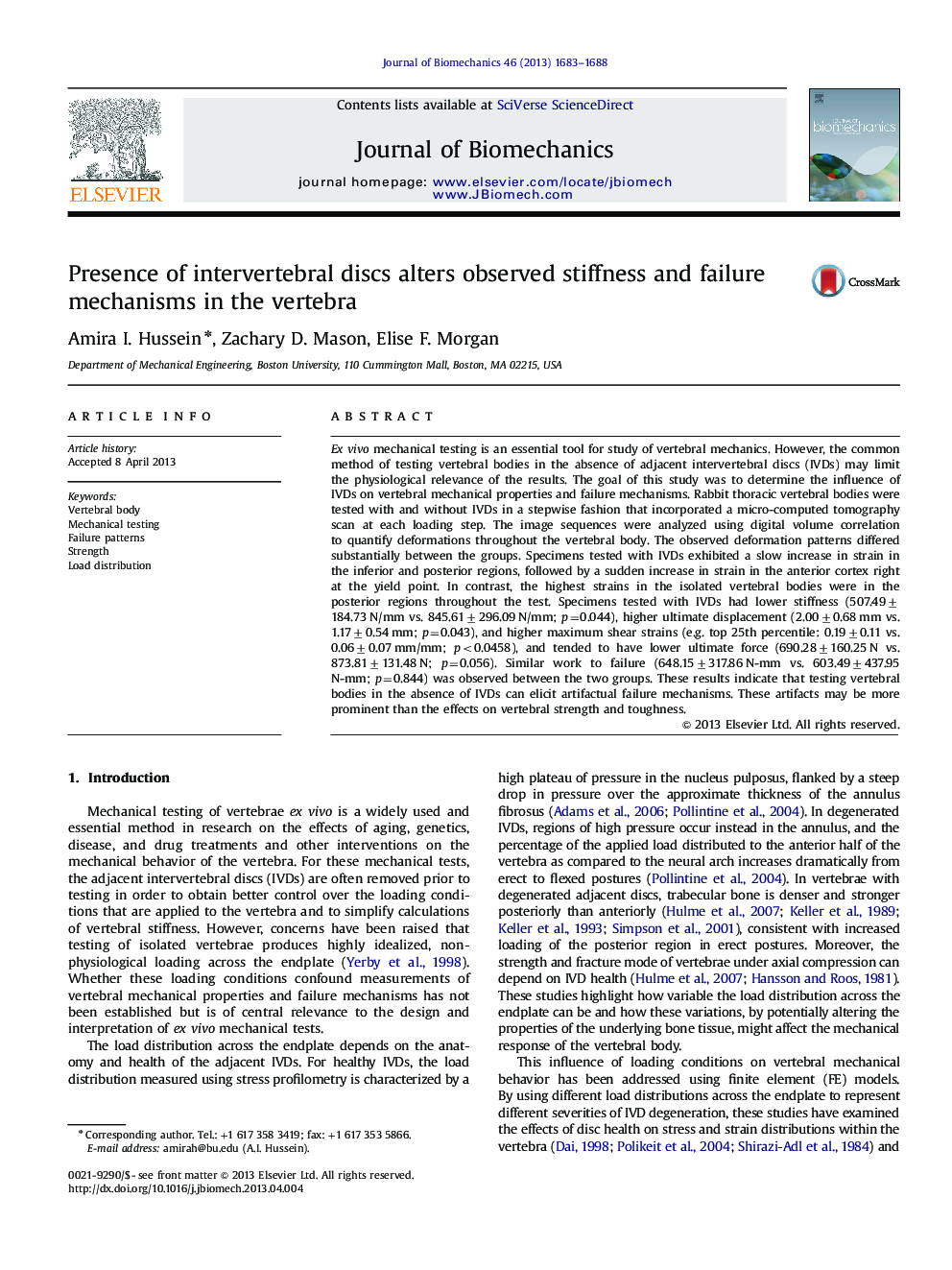| Article ID | Journal | Published Year | Pages | File Type |
|---|---|---|---|---|
| 10431897 | Journal of Biomechanics | 2013 | 6 Pages |
Abstract
Ex vivo mechanical testing is an essential tool for study of vertebral mechanics. However, the common method of testing vertebral bodies in the absence of adjacent intervertebral discs (IVDs) may limit the physiological relevance of the results. The goal of this study was to determine the influence of IVDs on vertebral mechanical properties and failure mechanisms. Rabbit thoracic vertebral bodies were tested with and without IVDs in a stepwise fashion that incorporated a micro-computed tomography scan at each loading step. The image sequences were analyzed using digital volume correlation to quantify deformations throughout the vertebral body. The observed deformation patterns differed substantially between the groups. Specimens tested with IVDs exhibited a slow increase in strain in the inferior and posterior regions, followed by a sudden increase in strain in the anterior cortex right at the yield point. In contrast, the highest strains in the isolated vertebral bodies were in the posterior regions throughout the test. Specimens tested with IVDs had lower stiffness (507.49±184.73 N/mm vs. 845.61±296.09 N/mm; p=0.044), higher ultimate displacement (2.00±0.68 mm vs. 1.17±0.54 mm; p=0.043), and higher maximum shear strains (e.g. top 25th percentile: 0.19±0.11 vs. 0.06±0.07 mm/mm; p<0.0458), and tended to have lower ultimate force (690.28±160.25 N vs. 873.81±131.48 N; p=0.056). Similar work to failure (648.15±317.86 N-mm vs. 603.49±437.95 N-mm; p=0.844) was observed between the two groups. These results indicate that testing vertebral bodies in the absence of IVDs can elicit artifactual failure mechanisms. These artifacts may be more prominent than the effects on vertebral strength and toughness.
Related Topics
Physical Sciences and Engineering
Engineering
Biomedical Engineering
Authors
Amira I. Hussein, Zachary D. Mason, Elise F. Morgan,
